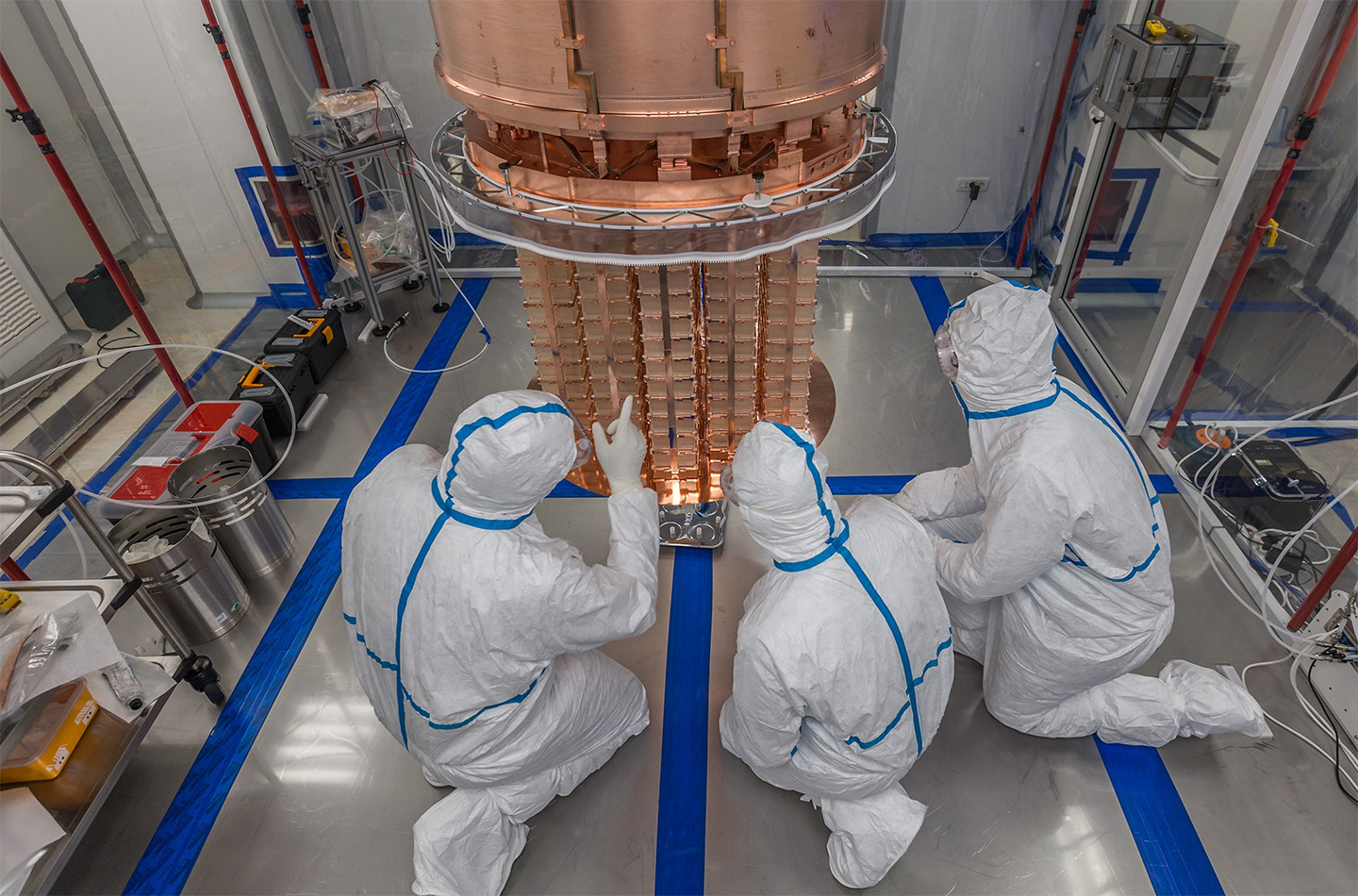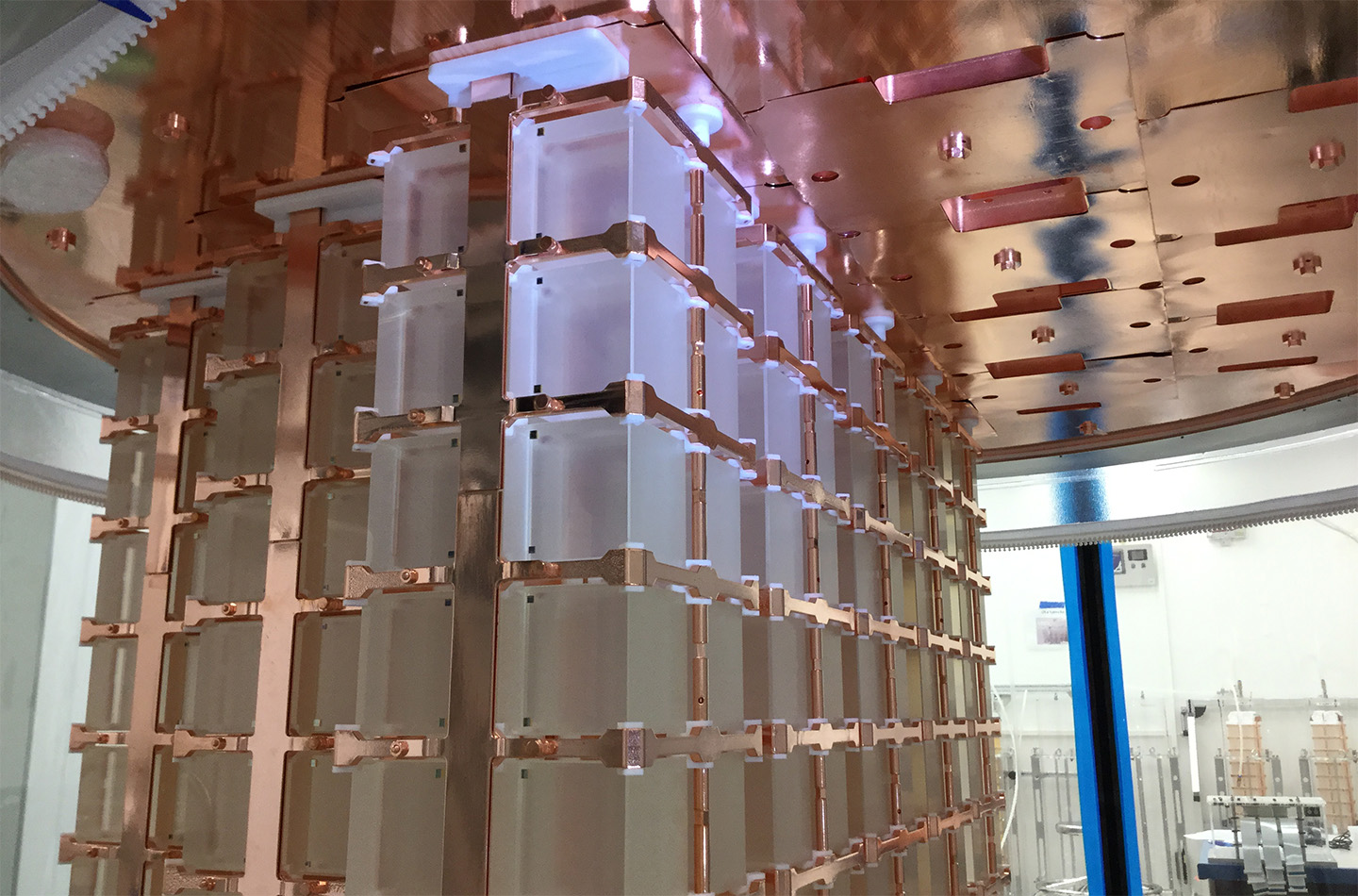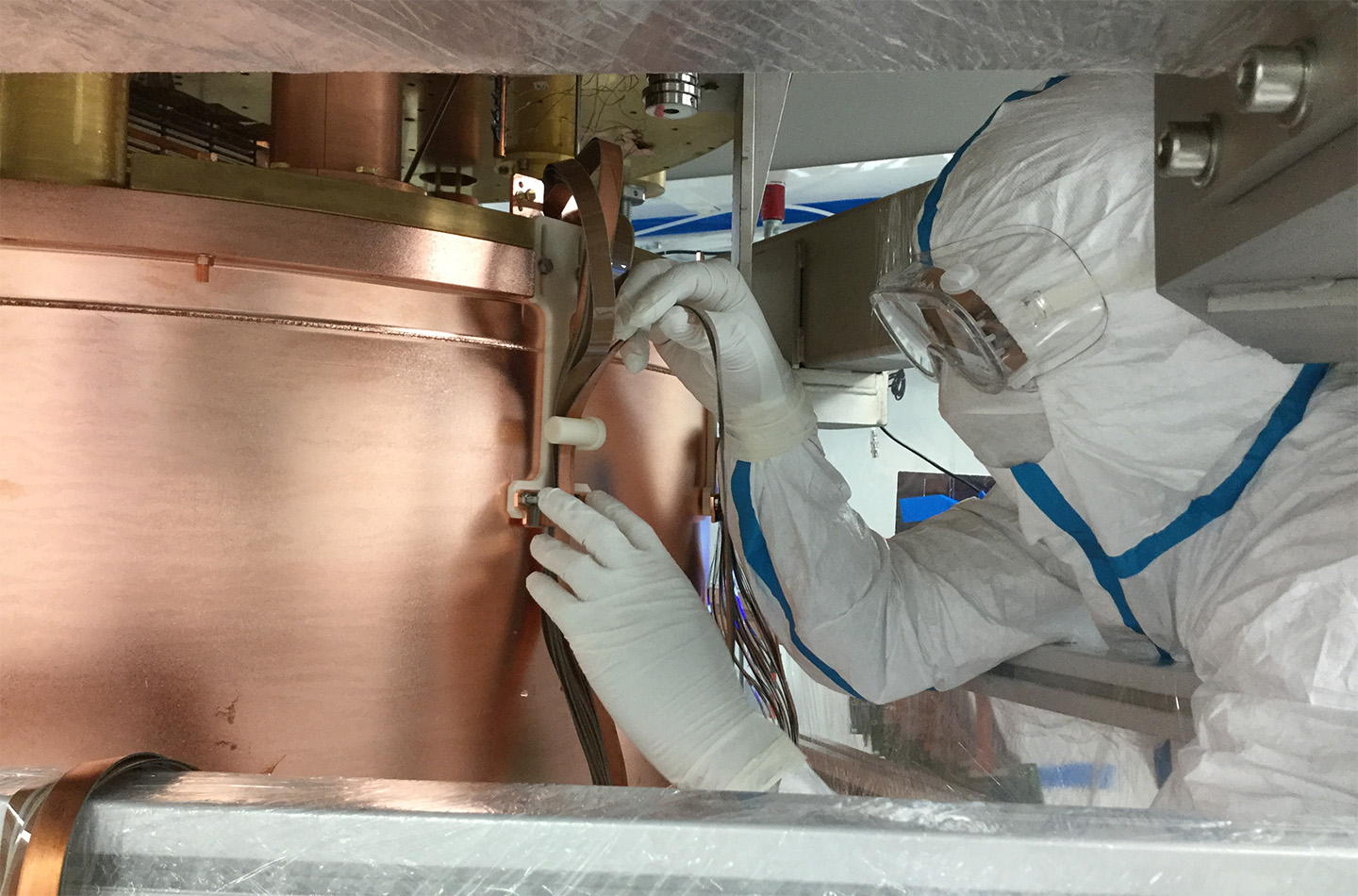Key Takeaways
- The Cryogenic Underground Observatory for Rare Events has collected two tonne-years of data in its search for the hypothesized "neutrinoless double beta decay."
- If researchers see the process, it will prove that neutrinos can behave as their own antiparticles. That could help explain why our universe is full of matter rather than antimatter or nothing at all.
- A new algorithm to remove noise from the sensitive CUORE detector helps researchers search for the signal and could improve future experiments to study neutrinos, gravitational waves, and dark matter.
The coldest cubic meter in the universe is the Cryogenic Underground Observatory for Rare Events, or CUORE. This chilly nuclear physics experiment looks for tiny fluctuations in temperature from a never-before-seen process called "neutrinoless double beta decay," which could help explain why our universe is full of matter. That extreme sensitivity means CUORE also records other activity, too: the sounds of scientists talking, the pulse of waves crashing on the shore 50 kilometers away, and earthquakes on the other side of the world.
CUORE is an international collaboration with more than 20 institutions. The experiment is led by the U.S. Department of Energy's Lawrence Berkeley National Laboratory (Berkeley Lab) and Italy's National Institute of Nuclear Physics (INFN), and operated at INFN's Gran Sasso National Laboratory. CUORE's latest data release uses a new algorithm that better accounts for background noise, clearing distracting signals and making it easier for scientists to spot the rare process they're looking for.
With the largest dataset of its kind, double the amount previously published, the CUORE collaboration has set new limits on how often neutrinoless double beta decay occurs in an atom of tellurium: on average, no more than once every 50 septillion - that's a trillion trillion - years. The results published in the journal Science on October 16.
"If we see neutrinoless double beta decay for the first time, that would be a monumental discovery showing that neutrinos can act as their own antiparticles," said Carlo Bucci, head spokesperson for CUORE and a physicist at Gran Sasso National Laboratory. "That, in turn, could help explain why the universe evolved into the form we see today."
If matter and antimatter were created in equal amounts during the Big Bang, they should have annihilated and left us with an empty universe. But if neutrinos can also act as antineutrinos, they could have potentially tipped the scales in favor of matter.

CUORE's milestone dataset is the largest from any solid-state detector, which uses crystals instead of the more common tanks of liquid or gas to precisely record energy from particle decays. The experiment's crystals weigh approximately 0.8 tonnes, and the data release contains two tonne-years of data (the equivalent of collecting data for two years if the crystals in the detector weighed one tonne).
"The focus of this data release is understanding sources of external vibrations and learning how to subtract that from our data to better search for this extremely rare decay," said Reina Maruyama, the U.S. spokesperson for CUORE and a professor at Yale University.
The detector uses 988 crystals of tellurium dioxide cooled to 10 millikelvin, or about negative 459 degrees Fahrenheit. If a nucleus in one of the crystals experiences the sought-after particle decay, the detector picks up a distinctive temperature change.
"We have to make sure to reduce or account for any other background disturbances that could cause extra heat, vibration, or other signals in our detector," said Kenny Vetter, a postdoctoral researcher at MIT and who worked on denoising CUORE's data while a graduate student at UC Berkeley and Berkeley Lab.
Part of that noise reduction is handled by the location. CUORE sits in INFN's Gran Sasso National Laboratory beneath nearly a mile of rock that blocks particles coming from space. However, the mountain itself also emits minor natural radiation. So CUORE is surrounded by special low-radiation shielding made from Roman lead ingots salvaged from a 2,000-year-old shipwreck.
But CUORE can still pick up other vibrational noise, including the waves of the distant Adriatic Sea and earthquakes as far away as Chile. For this data release, researchers developed a new algorithm to clean their data that is similar to what happens in noise-canceling headphones.

"Instead of the handful of microphones you'd find on a headset, CUORE - and the area around the detector - has more than two dozen different sensors that measure temperature, sound, vibration, and electrical interference," said Simone Quitadamo, who studied how sea waves show up in the detector while a graduate student at the Gran Sasso Science Institute and is now a postdoctoral researcher at the University of Milano Bicocca.
Among the sensors are microphones to pick up noise from researchers talking near the detector, accelerometers to monitor vibrations from pumps cooling the experiment, and seismometers to pick up low-frequency movements such as earthquakes. The 988 tellurium dioxide crystals themselves also act as sensors for environmental vibration and noise. And the team used a few unusual approaches in their work: A postdoc's old carbon-fiber bike wheel was wrapped in wire and is now a sensitive antenna to pick up electrical interference. Vetter worked on vibrational studies, in part, by jumping beneath the detector to calibrate the equipment.
Scientists matched information from the sensors with the recorded data, learning which activity in the detector should be ignored. The new algorithm was applied to CUORE's previously collected and new data, and can also be used for future datasets.
"The techniques we have developed to subtract the noise could be useful for other sensitive detectors, including experiments studying dark matter and gravitational waves," said Chiara Brofferio, a professor at the University of Milano-Bicocca and the Italian spokesperson for CUORE.
The approach will also be useful for CUPID (CUORE Upgrade with Particle IDentification), the next-generation experiment that could follow CUORE and continue the hunt for neutrinoless double beta decay.
"We're incredibly curious about whether this process happens because it would impact several of our key theories," said Irene Nutini, a staff research scientist at INFN Milano-Bicocca and one of the three CUORE physics analyses coordinators. "It could help explain why neutrinos are so much lighter than other particles, or why our universe is dominated by matter."

"It's exciting because we're unveiling how we got to be in this universe we are in," added Samantha Pagan, a former graduate student at Yale University and part of the large team (made mostly of students and postdocs) that reprocessed and analyzed the dataset. "And because CUORE is so sensitive, we can also do another whole program of physics with the detector where we look for dark matter."
In addition to neutrinos and dark matter, CUORE's sensitivity means it can also be used to study the physics of Earth itself. Researchers are already collaborating with geophysicists to understand how wind storms in Italy can affect the underground environment for sensitive detectors.
"We built this to be a particle detector, but it's also an amazing seismometer," said Yury Kolomensky, a scientist at Berkeley Lab and professor at UC Berkeley. "One vision is to have technology like CUPID and CUORE deployed in multiple locations around the world that could study the propagation of earthquakes and the Earth's core, as well as dark matter and neutrinoless double beta decay. We're seeing how these very cool techniques for our detector can have implications for other fields of science."
CUORE began operating in 2017 and has been taking data steadily since 2019, setting a record for keeping such a large amount of material at such cold temperatures for so long. The experiment plans to continue collecting data through 2025.






